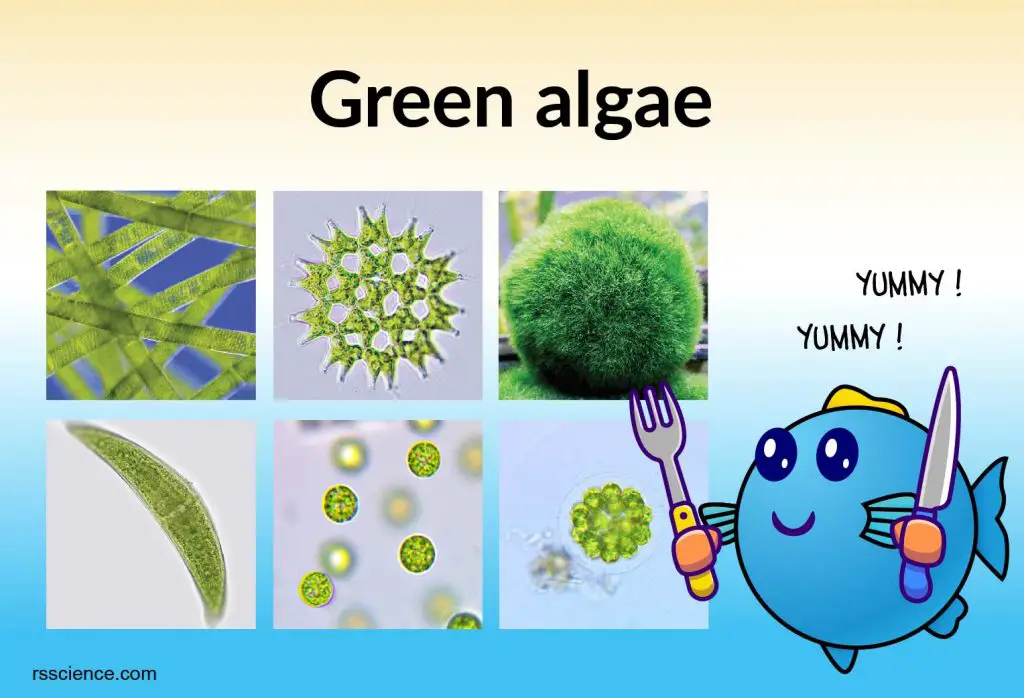This article covers
What are algae
Algae (singular, alga) are a general term for a large and diverse group of eukaryotic organisms that are capable of photosynthesis. Algae include unicellular microalgae, such as the diatoms and Chlorella, and multicellular algae, such as seaweeds that may reach 60 m in length and form underwater kelp forests.
Most algae live in the water, and they are primary producers on the earth. Unlike the land plants, they lack specialized cells and tissues, such as roots, leaves, stomata, and vascular bundles (xylem and phloem).
Alga is an excellent example to learn about the diversity of living organisms in nature. You can collect different types of algae from a pool or lake. For instance, green algae are easy to find in a small pond or river, with filamentous forms like a brush of green hairs. Under the microscope, you can easily see how their cells arrange into the long fiber shape (like the spirogyra we are going to discuss below).
I also discuss diatoms in a separate blog post. Diatoms are abundant on earth and very beautiful.
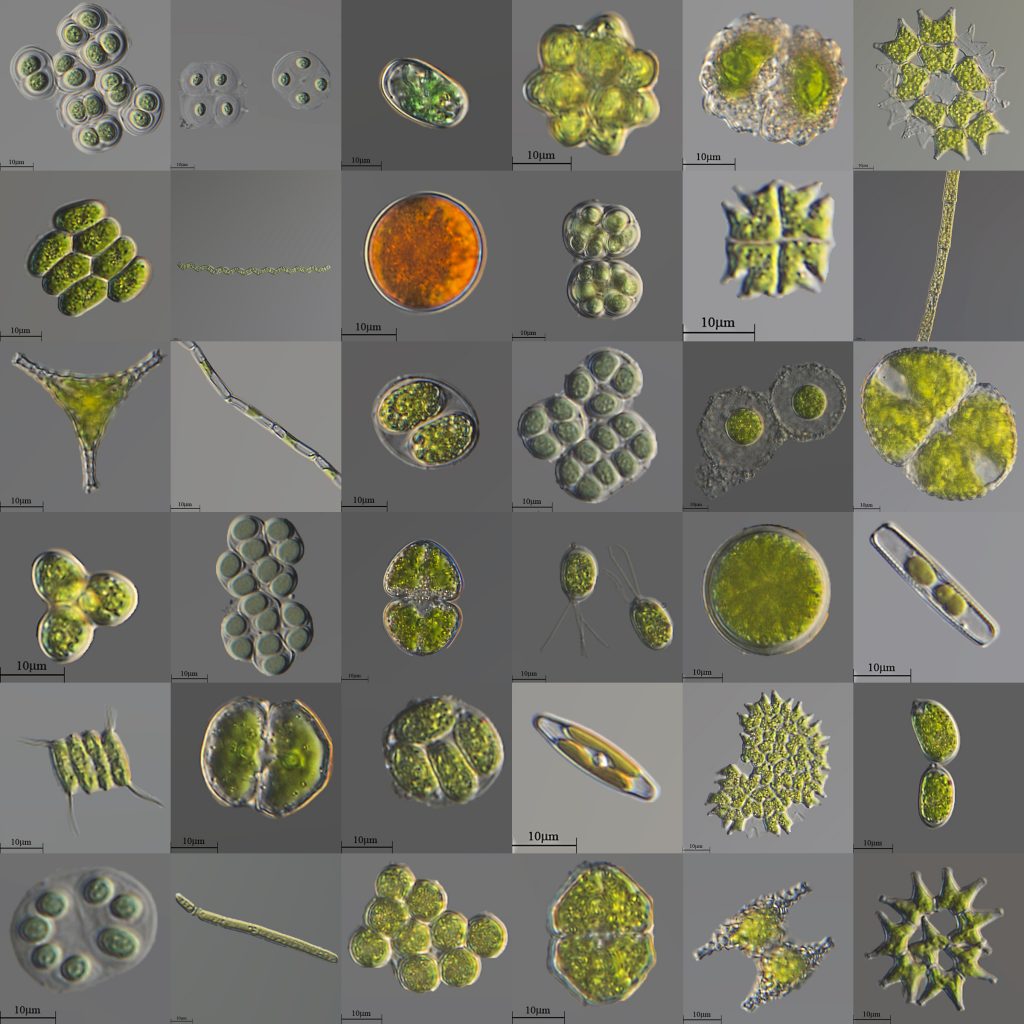
[In this figure] A variety of microscopic unicellular and colonial freshwater algae under a microscope.
Algae vary in shapes, sizes, and colors.
Photo credit: Alexander Klepnev from wiki
Green algae – spirogyra
Spirogyra (also known as pond silk) is a genus of filamentous charophyte green algae (family Zygnemataceae), generally found in freshwater, especially nutrient-rich lakes and streams. The name “Spirogyra” comes from “spiral,” which describes the morphology of the spiral arrangement of the chloroplasts (organelles that conduct photosynthesis). There are more than 400 species of spirogyra in the world identified so far.
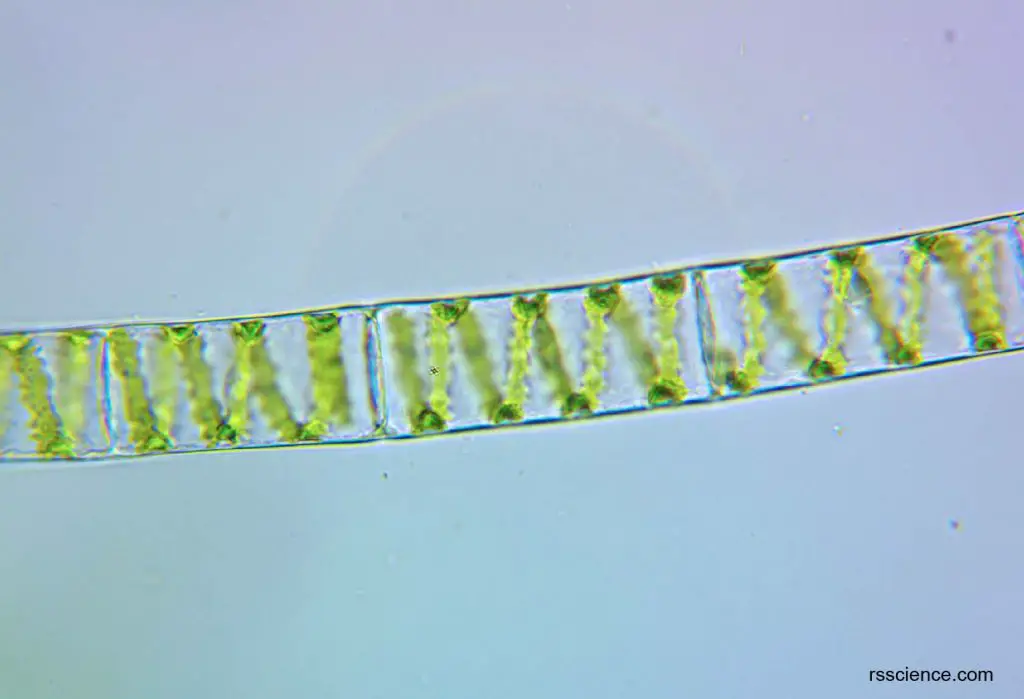
[In this figure] Spirogyra under a microscope.
One of spirogyra’s characteristics is its helical arrangement of chloroplast strands.
Spirogyra structure
Spirogyra has long, unbranched filaments formed by cells connected end to end. Each spirogyra filament is between 10 – 100 um in width and can be up to several cm in length. Sometimes, these filaments develop root-like structures for attaching themselves to the substrate.
The cell wall is made up of an inner layer of cellulose and an outer layer of pectin. The pectin can produce a slippery coating on the surface, called mucilage. A nucleus is suspended by thin strands of cytoplasm that are attached to the inner layer of the cell wall. The remaining space inside the cell is a central vacuole, which functions as a storage room. The spiraled ribbons of chloroplasts are embedded in this cytoplasm web. The photosynthesis produces starch and store in a special structure called pyrenoid.
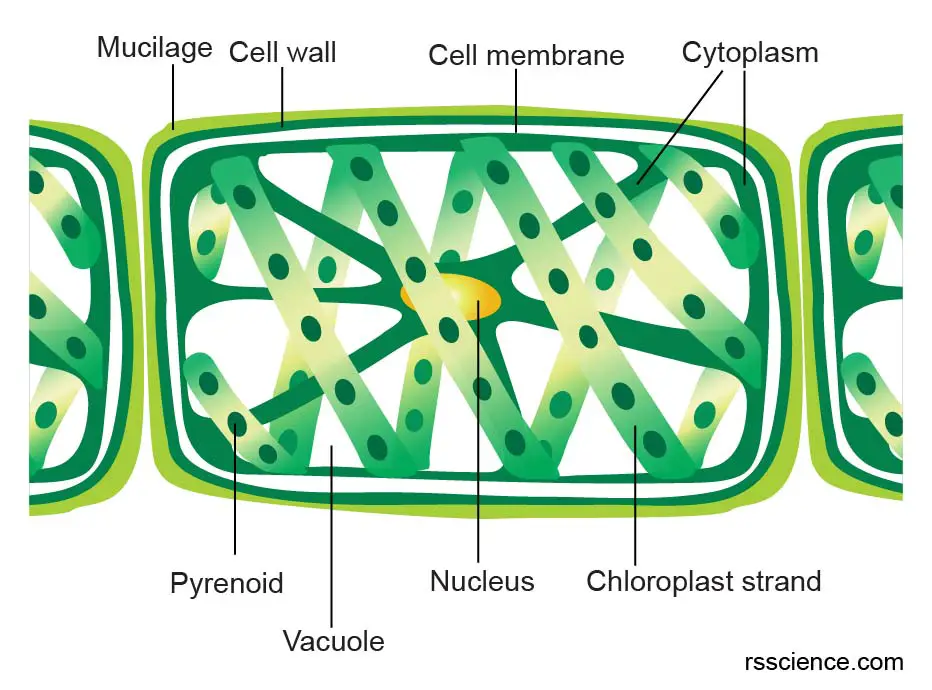
[In this figure] Cellular structure of Spirogyra.
Spirogyra reproduction
Asexual reproduction
Spirogyra reproduces in several ways. When nutrients are abundant, spirogyra multiplies rapidly by fragmentation, meaning a filament breaks up into two or more fragments. This process is called vegetative reproduction. Fragment pieces grow into new individuals. This process can happen quickly, and they can cover a large area in a short period (for example, eutrophication).
Sexual reproduction
When the environment becomes challenging, Spirogyra starts sexual reproduction. It takes place when two filaments come parallel to each other. Spirogyra develops outgrowths called conjugation tube between opposite cells. When the bridge is formed, the content of conjugating cells (except for the cell wall) recede, round up, and transfer through the conjugation tube into the opposite cell (from males to females). The nuclei from males and females are fused to increase genetic diversity at this stage. Spores then are generated to give rise to new algae.
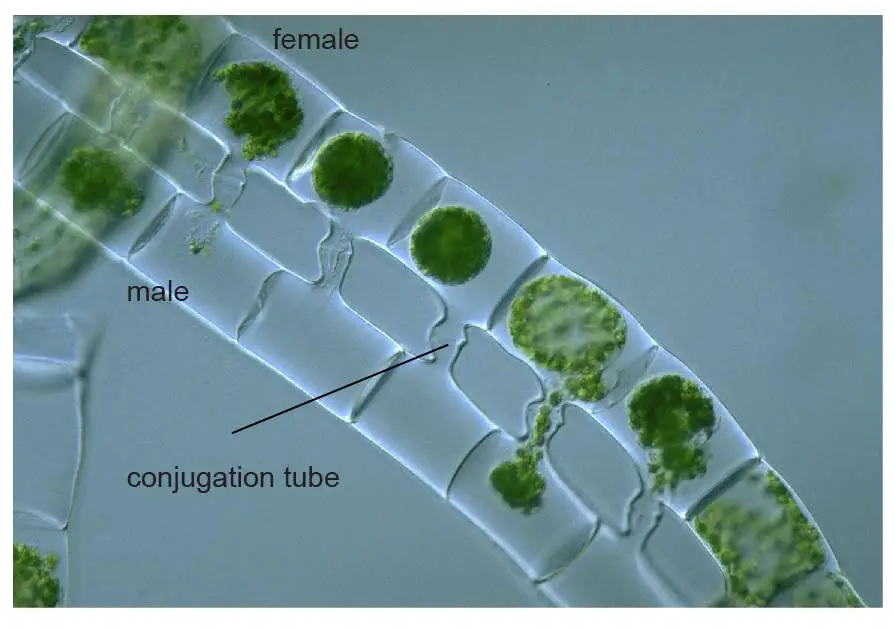
[In this figure] The sexual reproduction of spirogyra through conjugation.
Two strands of spirogyra come parallel to each other, and the conjugation tubes are formed. The cytoplasm of the male cell is transferred to the female cell. Then the DNA is rearranged, and spores are formed.
Photo credit: modified from Protist Information Server
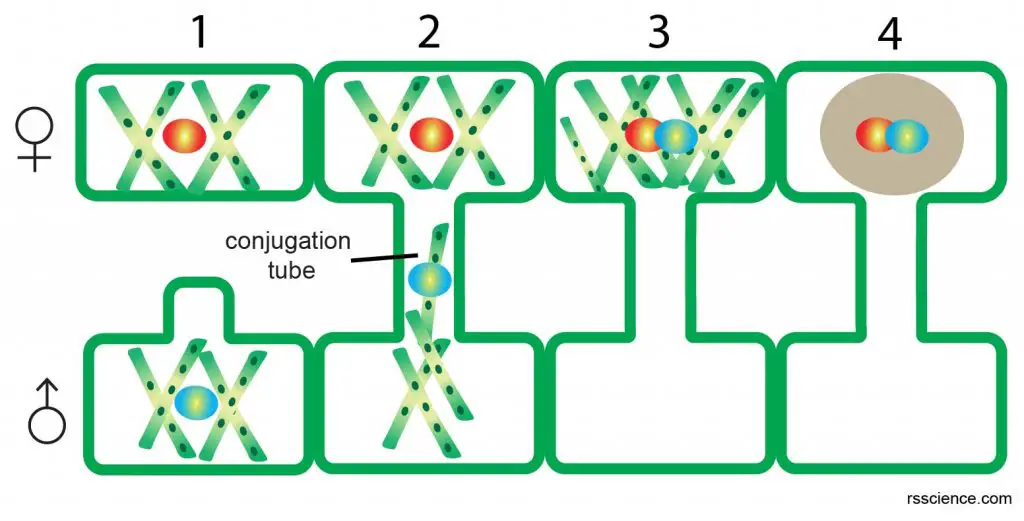
[In this figure] Illustration of spirogyra sexual reproduction.
(1) Two filaments line side by side. A protrusion from one cell forms and then elongated. (2) The elongated tube fused with the opposite cell and formed a conjugation tube. The cytoplasm of the cells acting as male cells transferred to the opposite cells (female cells). (3) The gametes fuse. (4) Meiosis happened, and the spores are formed.
Other green algae images
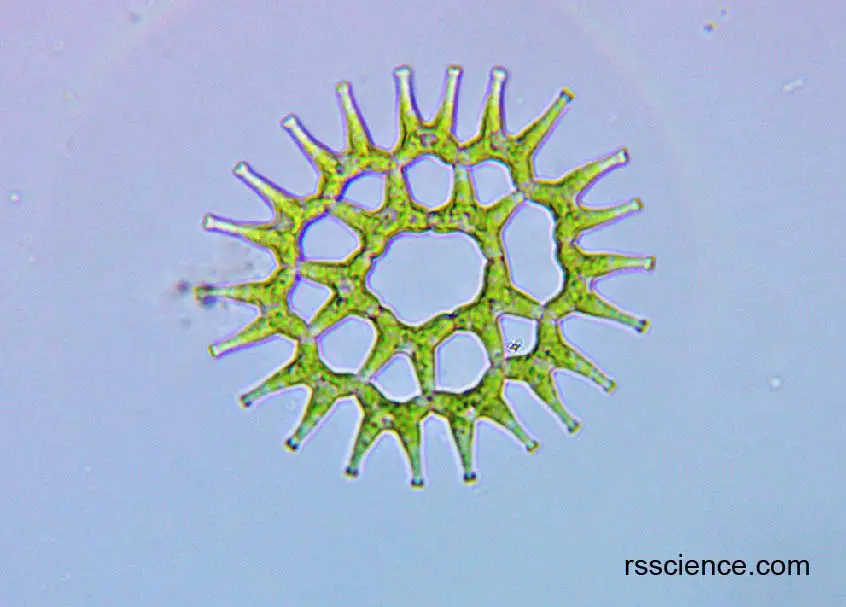
[In this figure] Pediastrum under a light microscope.
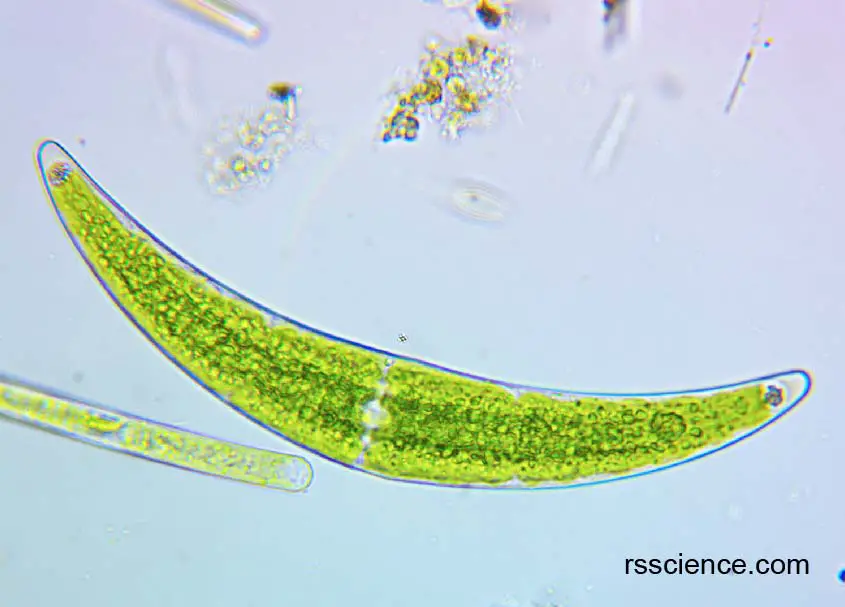
[In this figure] Closterium under a light microscope.
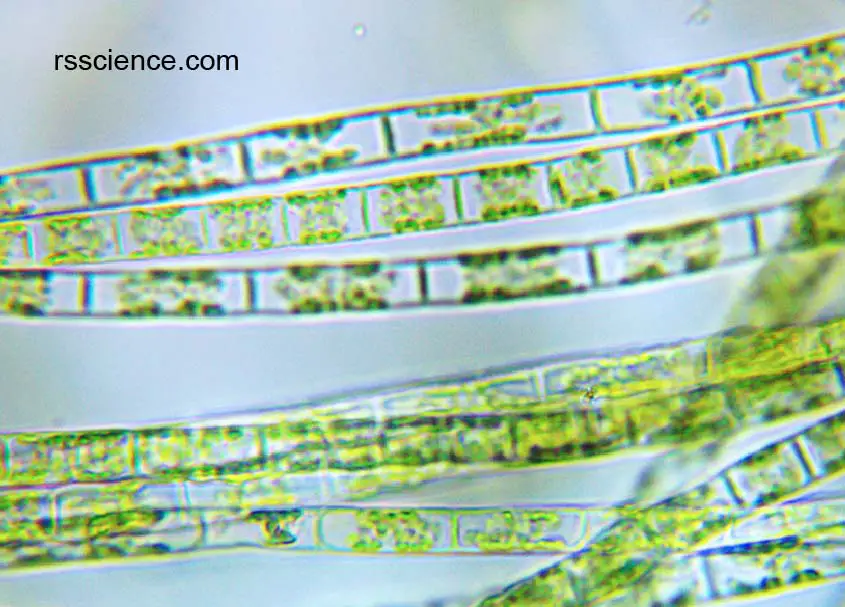
[In this figure] Filament alga under a light microscope.
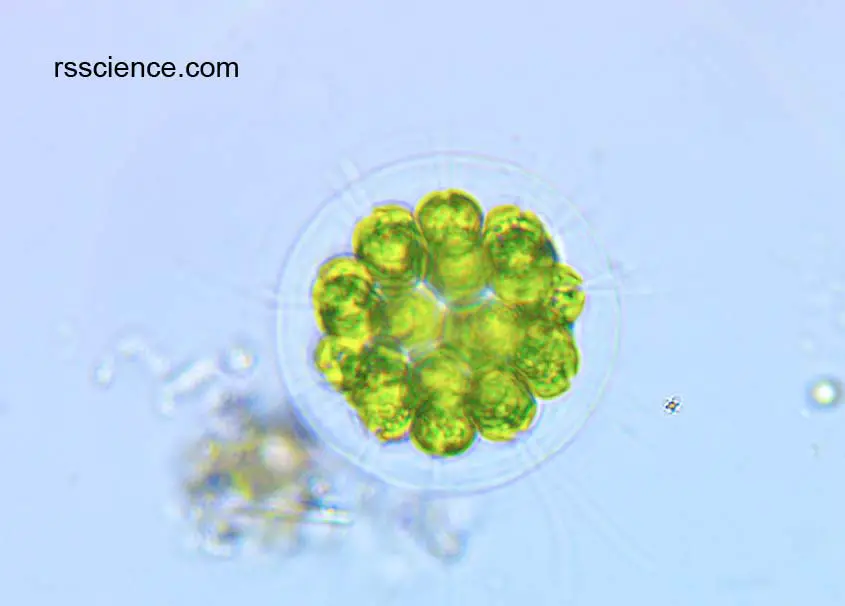
[In this figure] Unknown alga under a light microscope.

